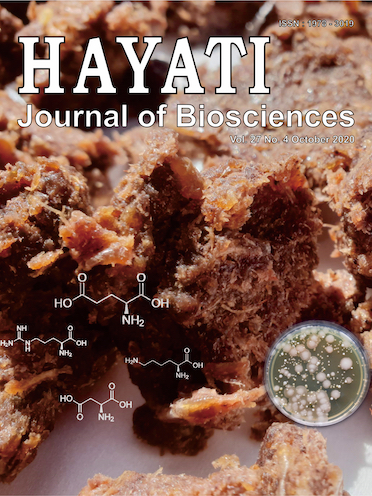Quality Improvement of Semi-Wet Terasi by Optimizing the Starter Culture Ratio of Controlled Fermentation
Abstract
Terasi is a traditional fermented shrimp paste used in Indonesian dish as condiments. Due to its affordability, the paste is widely consumed among the general population, and thus has a great impact in Indonesia. Currently, small-scale or home industry is common for terasi production, and natural fermentation process is the traditional method. Fermentation process is considered complete when desired aromatic odors are obtained. However, this makes the fermentation process subjective, because the decision is solely dependent on the producer. Additionally, natural fermentation poses a higher risk for contamination of microbial pathogens. As a result, the quality of the final product varies greatly from region to region. Therefore, it is necessary to improve the quality of terasi by means of controlled fermentation. Hence, the objective of the research is to optimize the controlled fermentation condition of terasi by determining the most optimal ratio of mixed starter culture. Optimal fermentation conditions were determined by analyzing the effect of the various starter inoculum on the inner microbial community, and results indicated that mixed culture of Staphylococcus saprophyticus, Bacillus subtilis, and Lactobacillus murinus with ratio of 2:1:2 was the most effective for suppressing the growth of unwanted microorganisms. The difference in the microbial composition also resulted to a change in the metabolite profile of terasi.
Downloads
HAYATI J Biosci is an open access journal and the article's license is CC-BY-NC. This license lets others distribute, remix, tweak, and build upon author's work, as long as they credit the original creation. Authors retain copyright and grant the journal/publisher non exclusive publishing rights with the work simultaneously licensed under a https://creativecommons.org/

























.png) IPB University
IPB University Department of Biology
Department of Biology The Indonesian Biological Society
The Indonesian Biological Society 

